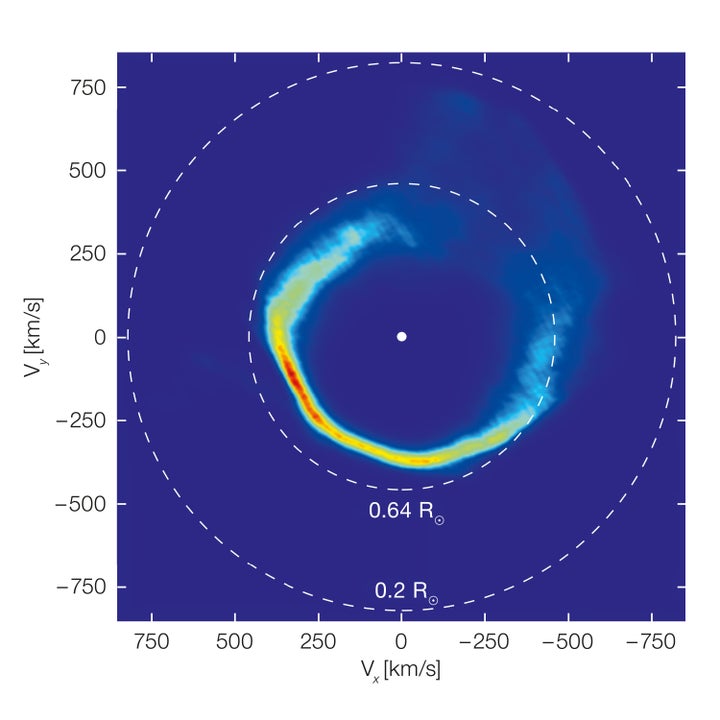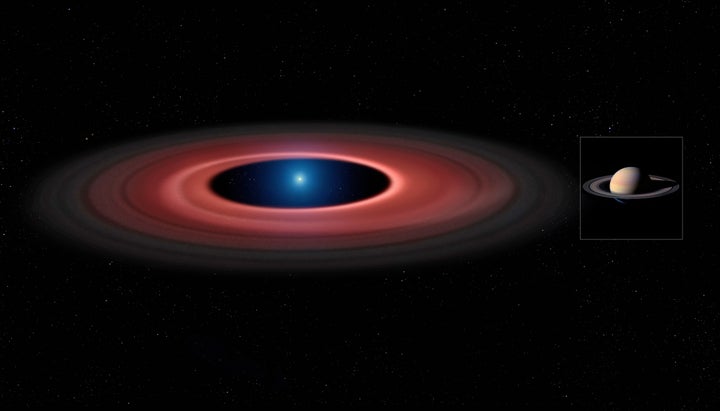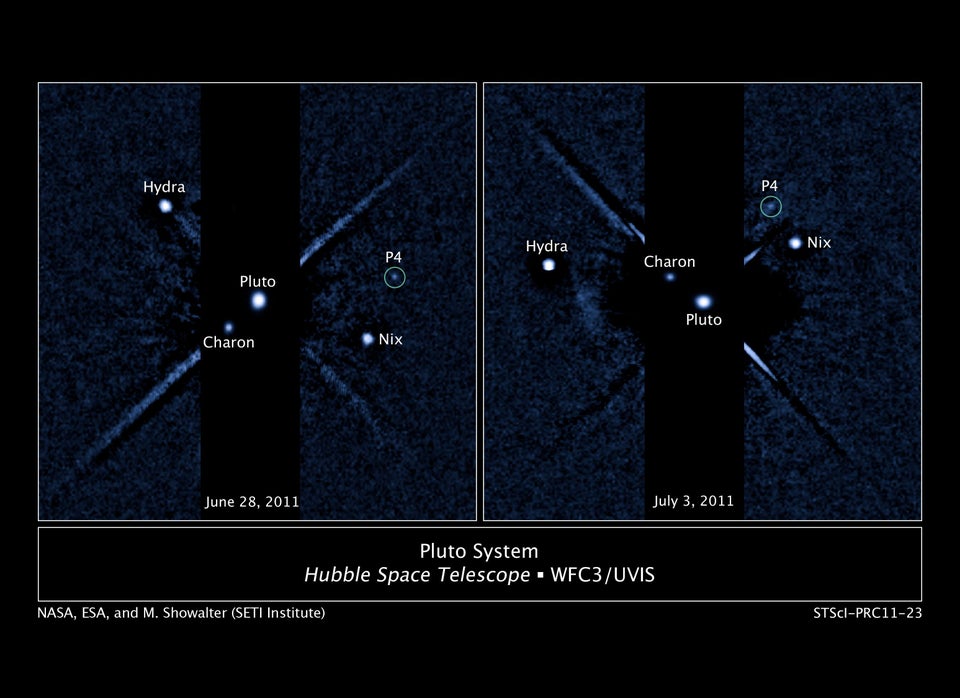Some 450 light-years away from Earth, a zombie-like white dwarf star is being eerily encircled by the crumbs of an asteroid that it devoured.
In a new study, researchers from the University of Warwick in England has modeled an image of the zombie star -- called SDSS J1228+1040 -- that broke up the asteroid after the space rock was dragged into its gravitational pull, creating a Saturn-like ring of dust and gas around the star.
The researchers hope that better understanding exactly how the white dwarf formed its ring could help scientists model the future of our solar system. After all, J1228+1040 is called a zombie because white dwarf stars are actually the dead remnants of larger stars. When our sun eventually dies, it could end up just like J1228+1040.
"When the Sun eventually runs out of fuel, it will also become a white dwarf," Christopher Manser, an astrophysics Ph.D. candidate at the University of Warwick and lead author of the study, told The Huffington Post in an email. "It is currently thought that most of the outer planets, and possibly Mars (and Earth if we are lucky!) will survive this event. By observing systems like SDSSJ1228+1040, we get an idea of what our own solar system will look like billions of years from now."
For the study, the researchers observed the white dwarf star and the asteroid remains with the European Southern Observatory's Very Large Telescope in Chile over a 12-year period from 2003 to 2015. These observations allowed the scientists to view the star from various angles and to record details of the light coming from the white dwarf and its surrounding ring.
The researchers then used a method called Doppler tomography that allowed them to build an image of the zombie star out of data from their observations. The image is the first of its kind to show the structure of the glowing, gaseous remains of J1228+1040's meal.
"To construct the image, we need to see the ring from a wide range of angles, and the rotation is very slow," Dr. Boris Gänsicke, a physics professor at the university and a co-author of the study, told HuffPost. "We knew for a number of years that something very exciting is happening in the star, but for many years, we did not have enough data to understand the evolution we were seeing."

By measuring the chemical makeup of the ring surrounding the star, the researchers found the debris must have come from a rocky asteroid.
"We used to expect that white dwarfs rest in peace within the stellar graveyard, yet, this particular star awoke, gobbling up an asteroid that ventured too close, making a beautiful decoration around its neck," Gänsicke said.
The researchers concluded that the ring was indeed the remnants of an asteroid that had passed too close to the zombie star, which appears to be more than seven times smaller in diameter than Saturn but has more than 2,500 times more mass.

The researchers noticed that there's a huge distance between the star and its rings, so vast in fact that Saturn and its rings could comfortably sit in the gap. The ring also did not appear to change over the 12 years that the researchers have observed it.
"The fact that this disc, in which the material goes around in only a few hours, can also have a stable pattern over a period of 12 years is amazing," Manser said.
Gänsicke and Manser not only hope to continue observing the debris ring around J1228+1040, but also to model how exactly the asteroid encountered the white dwarf to begin with.
The study is slated to be published in the Monthly Notices of the Royal Astronomical Society, and has been pre-printed by the European Southern Observatory.
Also on HuffPost Science:

